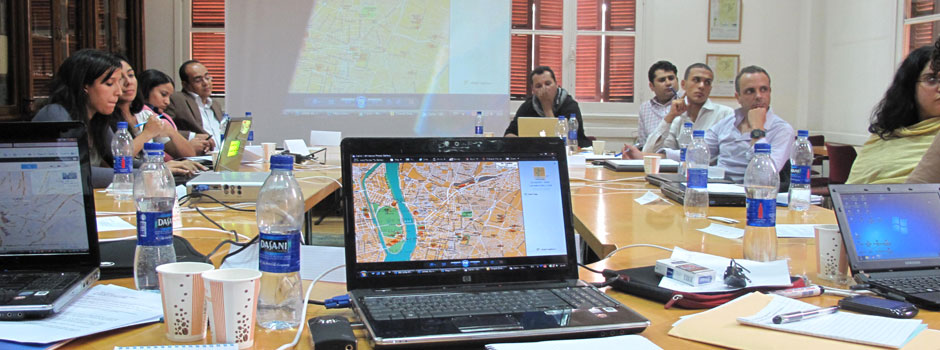THERE ARE THREE TYPES OF NEWSROOM MEETING:
- The Newsroom Meeting to prepare for the handling of current affairs.The editors of a daily newspaper consult with one another every afternoon to plan the content of the next day’s newspaper. They draw up a “Provisional Budget” for each page: number of articles, type of articles, length of articles, hierarchical order of articles, illustrations.
Example of a “Provisional Budget” for a page with 6 columns: 1 report by X… (3 col.); 1 report on discussions + 1 commentary by Y… (2 col.); 1 series of Short news items (1 col.).
- The Newsroom Meeting to organise the handling of current affairs.The editors of a daily newspaper meet every morning to organise the content of the newspaper being published the following day. They divide the work amongst themselves in order to establish a “General Budget”, which goes on to become the “Finalised Budget”: list of articles, names of the authors, length imposed on each article.
Example of a “Finalised Budget” for a page with 6 columns: 1 report by X… (2¼ col. of text + 3/4 col. photo); 1 report on discussions (1½ col.) + 1 Commentary by Y… (½ col.); 4 Short news items: Justice, Police, Budget, Corrigendum (1 col.).
- The Newsroom Meeting to consider the handling of current affairs.
The editors of a daily newspaper find the time to meet at regular intervals – for example, once per quarter or once every six months – in order to work together to analyse, in a self-critical manner, their collective output over the last few months and to put their heads together to come up with the best way to handle future news stories and to decide upon the editorial positions that are to be taken. The Newsroom Meeting then becomes an Editorial Committee, which may be convened at the joint initiative of the Director of the Newspaper, the Editorial Director or the Editor-in-Chief with a precise agenda.
Example agenda:
- Review of our handling of the “Arab Spring”.
- Preparation for the municipal elections.
- Should the newspaper pick a side in the next Presidential election?
STANDING MEETINGS
Producing a newspaper every day is like being in a race against time every day. In order to gain time, journalists remain standing during the Newsroom Meeting to finalise how they are going to handle the news that they have been preparing since the previous day. Why do they remain standing? Because the vertical position is the surest way to shorten the meetings.
SIT-DOWN MEETINGS
We sit down for our meetings if we have time to talk. This is the case when the Newsroom Meeting takes place with a view to setting out its expectations with regard to output from one day to the next or from one week to the next. This is also the case when the Newsroom Meeting becomes an Editorial Committee.
EXAMPLE OF A SCHEDULE IN A NEWSROOM ARRANGED IN SECTIONS
09:30 Section meetings. Mandatory participation for all journalists. Participants remain standing. Each puts forward their suggestions for articles in accordance with their own personal day planner. The proposed texts are calibrated, i.e. evaluated in terms of symbols or characters, lines, columns or pages. In view of the collective day planner, the Section Editor acts as a mediator between the staff. He or she decides upon the Daily Budget put forward by his or her team.
Example of a Daily Budget within a Politics Section:
* Page 9:
– Summary by A.R. of the Prime Minister’s electoral strategy: 2 col. with drawing by J.P.
Commentary on the divisions within the parliamentary majority (R.B.) ½ col.
Report on the House of Commons (L.Z.) 1 col.
Interview with the Lord Speaker of the House of Lords (A.G.) 1½ col.
Various Short news items: 1 col.
* Page 10:
Report on the electoral campaign being run by the extreme left (A.C.). 2 col. with 1 photo by R.D.
Portrait of the Squirrel Liberation Front candidate (A.B.) 1½ col. with photo by J.B.).
Analysis of the female vote (J.G.) 1½ col.
Short news items: ½ col.
10:00 Operational Newsroom Meeting, chaired by the Director of the Newspaper, the Editorial Director or the Editor-in-Chief. Representatives must be present from all Sections. Participants remain standing. Each Section presents its Daily Budget in turn. The discussion is limited to the selection of topics to be highlighted on the front page, which acts as a window into the newspaper, and the adjustments that need to be made to the “calibration”. The meeting lasts no longer than 20 minutes. Approval of a General Budget, which becomes the Finalised Budget as soon as it is submitted to the Editorial Office.
10:30 Each Section integrates the decisions listed in the General Budget into its daily output.
17:30 Each Section draws up its Preliminary Budget for the following day. Each journalist submits his or her plans to the Section Editor. The latter draws up an inventory of all of the plans and makes his or her initial decisions.
18:00 Provisional Newsroom Meeting. Sit-down meeting. Representatives must be present from each Section. Each Section sets out its Preliminary Budget for the following day. This meeting is open to all available editors. Round table discussion regarding the General Budget currently being drawn up. Duration varies depending on the workload of those involved.
SELF-DISCIPLINE
Two recommendations for the smooth running of all Newsroom Meetings:
- Never forget that you’re smarter in a group than when you’re alone.
- Do not mix genres: newsroom meetings are set aside exclusively for the content of the newspaper. (Other topics of discussion: differences of opinion, conflicts, relationship problems, trade union issues, etc. are generally handled by other bodies).

